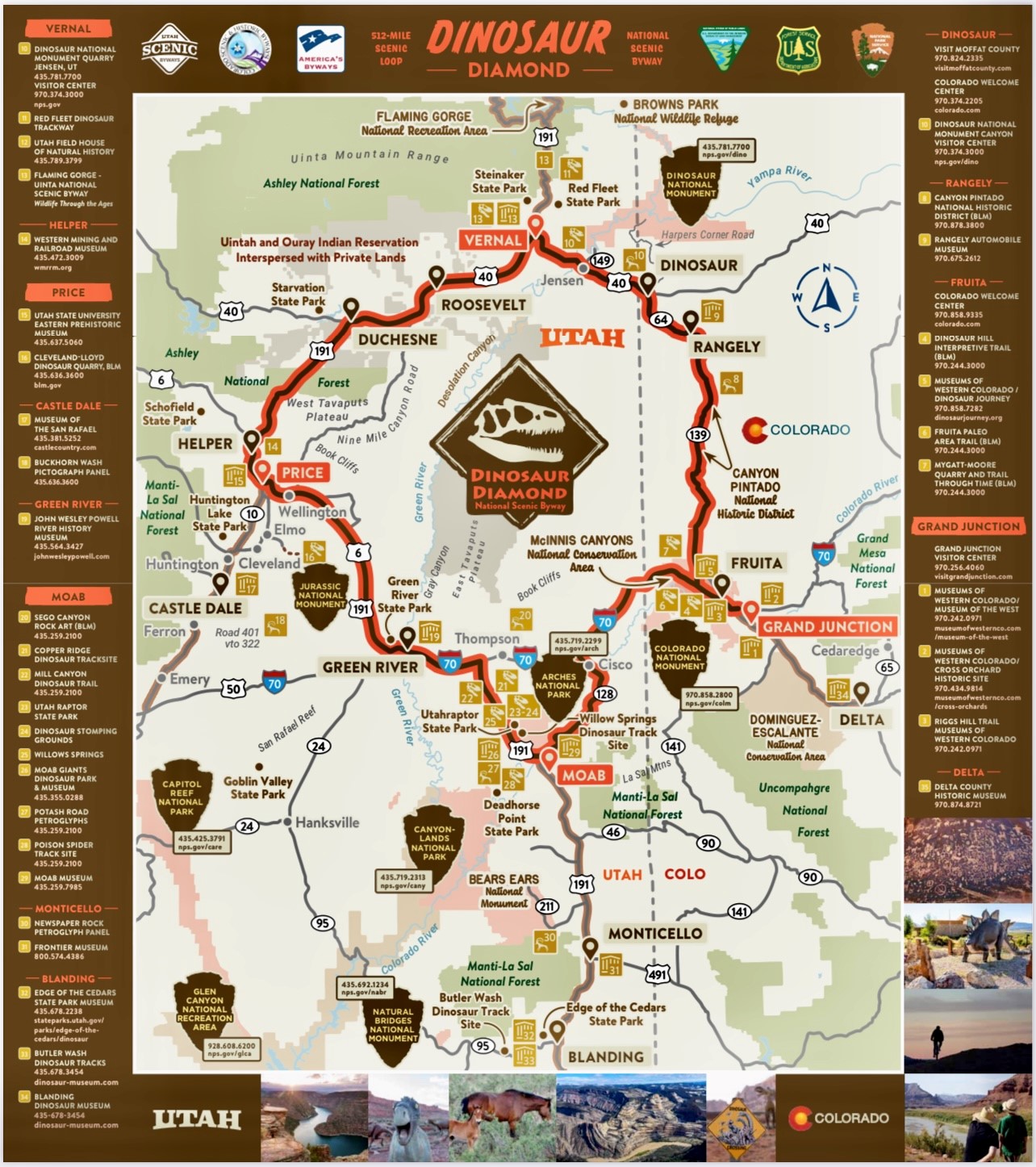The Dinosaur Diamond Scenic Byway

The Dinosaur Diamond Scenic Byway
The Dinosaur Diamond Scenic Byway is a 512-mile National Scenic Byway located within the United States covering parts of Utah and northwest Colorado. The segment within northwest Colorado was designated the Dinosaur Diamond Scenic and Historic Byway by the Colorado Transportation Commission on October 27, 1997. The highway forms a diamond-shaped loop, hence the name. Some of the world's most significant dinosaur fossil quarries and museums are clustered along the Dinosaur Diamond, in the midst of a forbidding but stunningly beautiful landscape.
The Dinosaur Diamond Scenic Byway is a MUST SEE!! Running through Northwest Colorado on Highway 40 and State Highway 64, the Dinosaur Diamond Scenic Byway offers a photographer's dream with ample wildlife viewing, scenic rock formations and breathtaking canyon views. For more information, areas of interest, routes and maps please visit Dinosaur Diamond.
Located along the Diamond is an historic area called "Canyon Pintado Historic District," which features pictographs and petroglyphs from the Ute and Fremont cultures. Located at mile marker 55.5 on Highway 139 within Canyon Pintado, is a 1000-year-old Kokopelli pictograph which you definitely do not want to miss! For more additional information on Canyon Pintado, click the link below.
Canyon Pintado Historic District Brochure